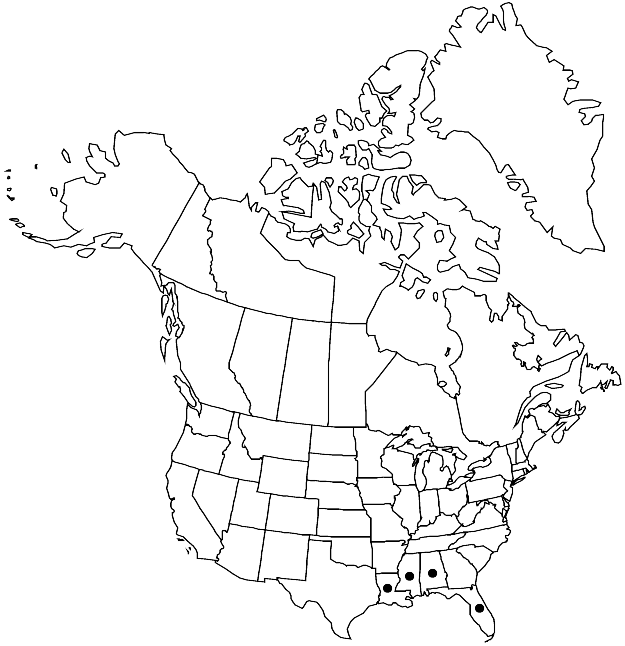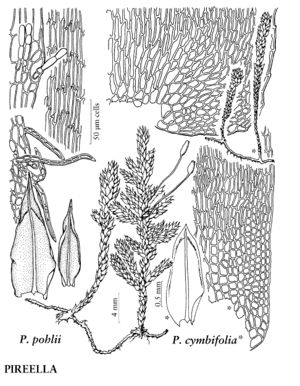Difference between revisions of "Pireella pohlii"
Rev. Bryol. 40: 18. 1913.
FNA>Volume Importer |
imported>Volume Importer |
||
| (2 intermediate revisions by 2 users not shown) | |||
| Line 60: | Line 60: | ||
|publication year=1913 | |publication year=1913 | ||
|special status=Illustrated | |special status=Illustrated | ||
| − | |source xml=https:// | + | |source xml=https://bitbucket.org/aafc-mbb/fna-data-curation/src/2e0870ddd59836b60bcf96646a41e87ea5a5943a/coarse_grained_fna_xml/V28/V28_940.xml |
|genus=Pireella | |genus=Pireella | ||
|species=Pireella pohlii | |species=Pireella pohlii | ||
Latest revision as of 21:39, 5 November 2020
Plants 0.5–10 cm. Stems branched. Distal stipe leaves ovate-acuminate, 0.6–2.5 × 0.4–1.1 mm; base often auriculate, weakly to strongly rounded, not decurrent; apex narrowly acuminate; costa short-excurrent in distal leaves; alar cells indistinct or (especially in auriculate plants) in 1 or 2 rows of few cells, irregular-quadrate, not reaching margin; medial laminal cells 18–64 × 2–3 µm. Branch leaves weakly seriate, strongly concave, 0.9–1.7 × 0.3–0.6 mm; apex long, narrow; medial laminal cells 18–62 × 2–3 µm, weakly to strongly prorate. Seta 0.5–1.2 cm. Capsule 1.5–2.5 × 1 mm. Spores spheric or ovoid, 23–37 × 18–35 µm.
Phenology: Capsules mature late winter (Feb–Mar).
Habitat: Dry, mesic, or boggy hardwood forests and hammocks, deep wooded ravines, mixed woodlands and dry sandy scrub, tree buttresses and trunks to 20 m, branches, palms, logs, rock
Elevation: low to high elevations (0-1900 m)
Distribution

Ala., Fla., La., Miss., c, s Mexico, West Indies, Central America, South America.
Discussion
Few other mosses in the region are likely to be confused with Pireella pohlii other than P. cymbifolia. Plants of P. pohlii are usually irregularly pinnate, but may be simple if depauperate. The bases of stipe and stem leaves are variously rounded to almost auriculate; the alar cells are subquadrate or rhombic, few in number, and do not reach the margin. Pireella pohlii is found from central and northern Florida to Louisiana. Sporophytes of P. pohlii are known in the flora area from only one site in Florida.
Selected References
None.
